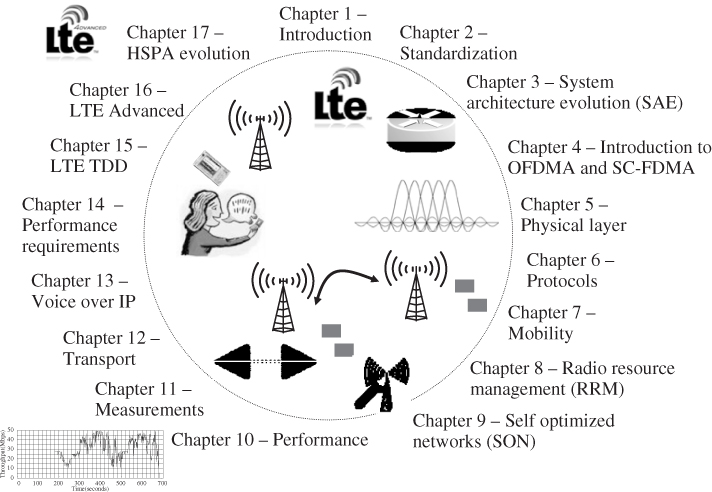Preface
The number of mobile subscribers has increased tremendously in recent years. Voice communication has become mobile in a massive way and the mobile is the preferred method of voice communication. At the same time data usage has grown quickly in networks where 3GPP High Speed Packet Access (HSPA) was introduced, indicating that the users find broadband wireless data valuable. Average data consumption exceeds hundreds of megabytes and even a few gigabytes per subscriber per month. End users expect data performance similar to fixed lines. Operators request high data capacity with low cost of data delivery. 3GPP Long Term Evolution (LTE) is designed to meet those targets. The first commercial LTE networks have shown attractive performance in the field with data rates of several tens of mbps. This book presents 3GPP LTE standard in Release 8 and describes its expected performance.
Figure 0.1 Contents of the book

The book is structured as follows. Chapter 1 presents the introduction. The standardization background and process is described in Chapter 2. System architecture evolution (SAE) is presented in Chapter 3 and the basics of the air interface in Chapter 3. Chapter 5 describes 3GPP LTE physical layer solutions and Chapter 6 protocols. Mobility aspects are addressed in Chapter 7 and the radio resource management in Chapter 8. Self-optimized Network (SON) algorithms are presented ...

